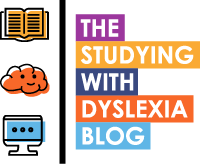Last year the BBC reported that the number of children who get educated at home has risen as much as 40% over a period of three years. The practice of ‘home schooling’ is becoming popular for many reasons. In many cases, it could be because your child’s school is not providing an education that meets the needs of your dyslexic child.
If you have chosen to go down the home education route for your child, then you have the flexibility to provide an education in ways that many schools just struggle to.
In this article, I will share with you some tips that can help you as you develop your child’s education at home.
Firstly lets look at some of the challenges that a child experiences within a school.
Firstly, let’s look at the situation logically in schools today. Teachers are given classes of 30 plus kids to teach and whilst they may get support from teaching assistants, the teacher still needs to teach with content that appeals to each pupil regardless of need. This is increasingly being stressed by OFSTED as a need to provide better ‘differentiated learning’
Her Majesties Curriculum Inspector, Amanda Spielman recent wrote this to explain some recent changed to OFTSTED inspection criteria:
“Ensuring that all learners have access to education.
We want inspection to contribute to an inclusive education system that can accommodate, and cater for, the needs of all learners of all ages. The specific issues vary by education remit, for example it means ensuring that:
early years provision is inclusive of young children with specific needs
schools do not remove, or lose, pupils from their roll for reasons other those in the best educational interests of those pupils
further education providers are supporting learners to complete programmes of study that are appropriate and help them reach meaningful destinations.”
How can teachers possibly ensure best practice in supporting the multiple needs of children in their classes effectively, when there are so many children in the classroom? Teachers are stressed and with stress comes, for some, a lack of pro-activity in teaching and more reactivity to behavioural challenges.
Parents across the UK and beyond will know how being in school is stressful for a dyslexic child. Everything is measured, this breeds a culture of children comparing themselves to each other and it doesn’t take long for a child to see school as a place of uncertainty and at times threatening and as a result the child’s desire to engage and learn is replaced for dis-empowerment and dis-engagement.
For some parents, it may well be seen that taking their child out of the school environment and into a homeschool environment is a positive step for the following reasons:
Focus and concentration is higher for the child.
The child is learning in a happier environment.
There is flexibility for the parent in how their child gets taught as it is only the child in the classroom and the educational content can be delivered in a way that suits the child.
Tips for effective learning.
I would like to share with you the following video from Dr Susie Nyman on how to effectively teach a child. She talks about ‘multi-sensory learning’.
What I love about this video is how there are so many ways in which a dyslexic child can connect with learning which is so often missed in many schools today.
With home education, a parent has the flexibility to try lots of multi-sensory ways to help their child learn and what’s more, make the learning fun!
What resources are available to support home-schooling for a dyslexic child?
Training.
There are many resources available that can help a parent in their endeavours to teach their own dyslexic children. Some will be in the form of training courses from organisations such as the British Dyslexia Association or the Helen Arkell Dyslexia Centre.
Informative Publications
Equally there are publications that are worth checking out such as the BDA Dyslexia Friendly Schools Good Practise Guide. Whilst it is a publication focused at schools, a parent who wants some pointers in providing dyslexia friendly education would benefit from reading the publication.
Dyslexia Friendly Teaching Materials.
Did you know that you can get free electronic versions (PDF) of all published text books for schools which can then be read out loud using a range of free or premium software products. This gives a child with dyslexia an alternative way to access educational content that will help their studies.
Equally, you may want to find dyslexia friendly books that could be helpful such as from Barrington Stoke or essential revision guides from Oaka Books.




